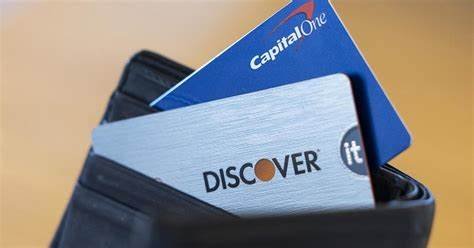In a move set to dramatically reshape the American financial landscape, Capital One’s $35 billion all-stock acquisition of Discover Financial Services has cleared its final regulatory hurdles. With approvals now granted by the Federal Reserve Board of Governors, the Office of the Comptroller of the Currency (OCC), and the U.S. Department of Justice, the transaction is on track to close on May 18, 2025.
Once finalized, the deal will crown Capital One as the largest issuer of credit cards in the United States by loan volume, surpassing major competitors including JPMorgan Chase, Citigroup, and Bank of America. The merger also marks the emergence of a powerful new player with consolidated assets of nearly $638 billion, making it the eighth-largest insured depository institution in the country.

Regulatory Green Light with Conditions
While regulators gave the deal a thumbs-up, it didn’t come without strings attached. The OCC’s approval requires Capital One to submit a detailed plan to address any lingering enforcement issues tied to Discover Bank, particularly in the area of consumer harm and compliance.
At the same time, the Federal Reserve imposed a $100 million penalty on Discover for improperly charging certain interchange fees to merchants between 2007 and 2023. Discover has since discontinued those practices and committed to reimbursing affected customers.
These stipulations aim to ensure that the merged entity upholds strong regulatory and ethical standards, even as it dramatically expands its market influence.
A Strategic Power Play
Capital One’s acquisition of Discover isn’t just about issuing more credit cards — it’s about infrastructure and market dominance.
By bringing Discover’s independent card payment network in-house, Capital One gains access to a platform used by over 300 million cardholders worldwide. This shift enables Capital One to directly process transactions, unlike most major U.S. banks, which rely on third-party networks like Visa or Mastercard.
This vertical integration gives Capital One a strategic edge. It can now influence merchant fees, control its own payments ecosystem, and generate additional revenue streams, especially from merchant interchange fees — a key source of profitability.
Impact on Consumers: Opportunities and Concerns
For existing Discover customers, the merger could lead to increased card acceptance at merchants, as Capital One’s wider network bolsters Discover’s traditionally lower acceptance rates. Additionally, broader access to Capital One’s online tools and customer service infrastructure may improve the user experience.
However, industry watchers caution that the merger could result in higher interest rates for some customers. Capital One has historically targeted subprime borrowers, those with credit scores in the 600s, and typically charges higher interest rates to offset risk. With more power in the market, Capital One could lean into these pricing strategies even more aggressively.
For now, no immediate changes are expected to existing customer accounts, according to Capital One. But longer-term impacts — from reward program shifts to fee structures — are possible down the line.
From Retail Roots to Financial Titans
Capital One, founded in 1994 as a credit card spinoff of Signet Financial, has evolved into a major player in auto lending, consumer banking, and digital financial services. Its ubiquitous “What’s in Your Wallet?” slogan has made it one of the most recognized brands in banking.
Discover, by contrast, traces its origins back to the 1980s as part of Sears’ financial services operations. It became a standalone company in 2007 and has since carved out a loyal customer base despite limited acceptance compared to Visa and Mastercard.
Together, the companies will control about one-third of the subprime credit card market, serving millions of Americans with limited credit histories or lower credit scores.

What’s Next?
The two companies will report first-quarter earnings this coming Tuesday, offering analysts and investors a first look at how the transition is progressing behind the scenes. Assuming no delays, the merger will close on May 18, 2025.
With the deal set to transform the landscape of U.S. consumer credit, all eyes will be on how Capital One integrates Discover’s network, navigates compliance, and manages its significantly larger customer base.
This merger may not only define the future of Capital One, but also signal a new era of consolidation in American banking.
📎 External Source for More Details:
Yahoo Finance: Capital One-Discover Merger Gets Final Regulatory Nod
